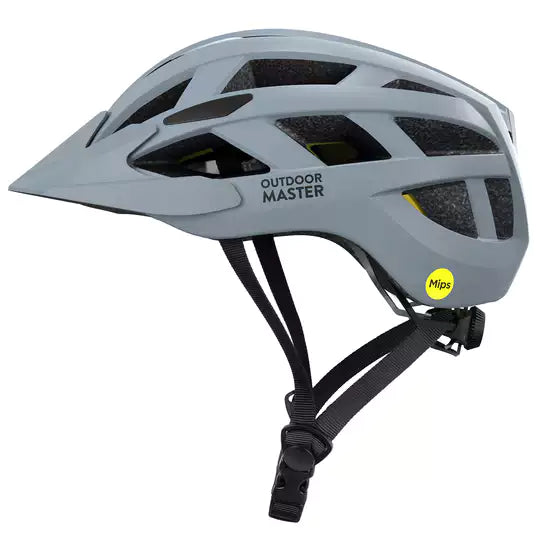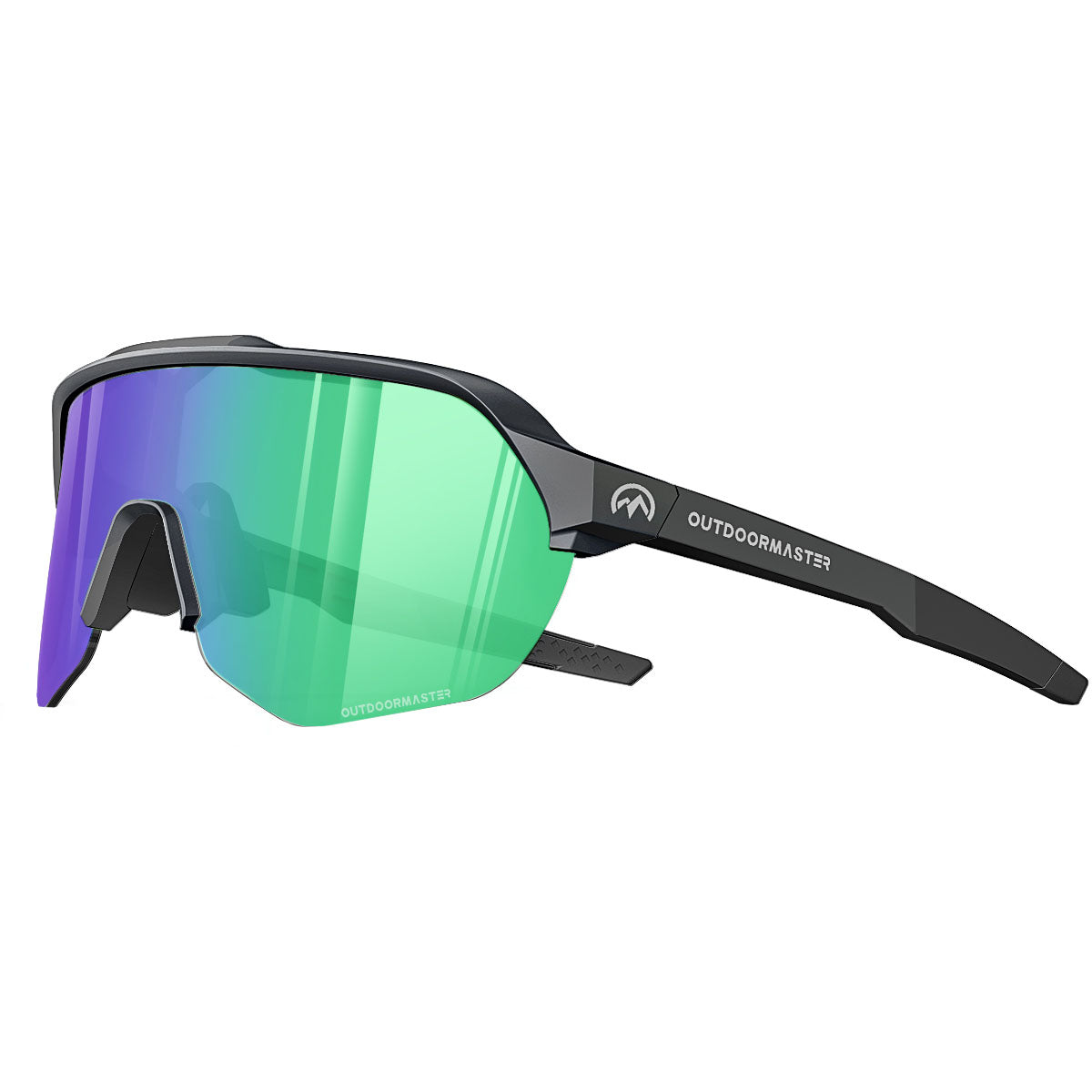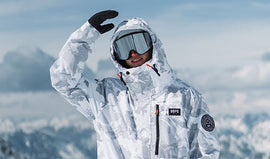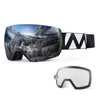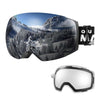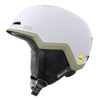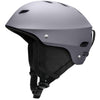
As the temperatures start to drop and the nights draw in, many of us turn our thoughts to skiing and snowboarding. The ski resorts don't switch on their lifts until November, but if you're anything like me, you'll be itching to get into the mountains.
The thing is, your mind might be ready, but is your body? Are you fit enough for 8 hours of shredding the slopes or going for long slogs into the backcountry looking for deep snow?
In this article, I'll go into how to train for a ski season. You'll learn when to start and what to focus on to make the most out of your winter season.
But before I get into it, I want you to know that I'm not a qualified personal trainer. All this information is from what I've picked up over the years from research, personal experience, and health professionals. I did all the research for you so you don’t have to.
Table of content
Why It's Important To Train For A Ski Season When To Start Training For A Ski Season How To Train For A Ski Season How To Build Your Endurance For Skiing How To Build Your Strength For A Ski Season How To Improve Flexibility For Skiing And Snowboarding Get A Workout plan Final ThoughtsWhy It's Important To Train For A Ski Season
THE HARD PARTS BECOME EASIER
As I write this, it's September. It's raining heavily in the little French ski resort I live in, but the peaks at higher altitudes around me are getting a dusting of snow. If you wanna know about when the ski seasons start around the globe, you can find the information here.
Honestly, I've been preparing for winter most of the summer and am about to step up my workout regime to be ready for when the snow is deep enough. As always, my first jaunt up the mountain this winter will be a split boarding mission to claim first tracks.
In the early days of my split boarding career, touring up a mountain was incredibly hard. But, since then, I've worked on my fitness, making the uphills much easier. This means I have more energy to enjoy the deep powder on the way back down.
There's nothing worse than hiking for a few hours only to feel drained, preventing you from riding the powder as you visualized on the way up.
BETTER ENDURANCE
You don't have to ski tour or splitboard to benefit from good fitness. Whether you're a skier or a snowboarder, you'll be able to enjoy the mountain much more with a good level of fitness.
You'll be able to ski longer before you feel tired. If you don't do anything to improve your fitness, you could be done by lunchtime. This may not happen in your first day or so, but you'll start to feel fatigued later in your trip.
You've paid for a lift pass, so you'll want to get your money's worth. It would be a shame to waste it or miss out on a perfect day because you're too tired to hit the mountain. This is a great incentive to start working out.
IMPROVED PERFORMANCE

You'll perform much better on the slopes when you're feeling strong. The extra strength will allow you to commit to every turn, jump, and trick. You'll be able to go much faster with more control, making you feel like a hero. You won't need to hold back, as you know your body can take everything you're going to put it through.
INJURY PREVENTION
Being fit allows you to react to changes and emergencies better than if you were unfit. This means that you will be able to get out of trouble more quickly, which goes a long way toward self-preservation.
Common injuries happen when tiredness sets in. So if your endurance and strength are up to scratch, there's less chance you'll get injured.
If you have a good base strength, your body is more robust. So when you do get it wrong, you can withstand impacts from falls much better. I've definitely noticed this since adding strength training sessions into my workout regime. I've got away with a lot more than I would've in the past, even though I'm considerably older now.
IT KEEPS YOU GOING FOR MANY YEARS
There's no escaping the fact our bodies get weaker with age unless you do something about it. Keeping fit will allow you to keep skiing and snowboarding for many years to come. Which, in turn, keeps you healthy.
When To Start Training For A Ski Season

In an ideal world, you should start training for skiing six to eight weeks before you head to the mountains. However, there's no time like the present. So no matter how far away your trip is, you'll benefit from doing some kind of exercise right now. The earlier you start, the fitter you'll be for when you get to the resort.
Even finding 30 minutes a day to work on your core or go for a run will make a difference. However, if you've only got a week before you go, you're not going to make a significant difference to your fitness.
Another consideration as you approach your ski or snowboard trip is any pre-existing injuries you may have. If you have a niggle in your knee, shoulder, or any other part of your body, get it dealt with as soon as possible. You don't want to make it worse by stressing it.
Also, if you have had treatment for an injury, you have to be realistic about how well you've recovered. You may feel like you can take it easy, sticking to green and blue runs, but you may not be 100% recovered. In this case, seek professional advice before you push your injury too far, setting you back.
How To Train For A Ski Season

According to British Olympic skier Graham Bell, there are three things you need to work on before the ski season. Endurance, strength, and flexibility. So let's look at how you can improve on all these aspects of fitness:
HOW TO BUILD YOUR ENDURANCE FOR SKIING
Most skiers and snowboarders want to spend all day on the mountain, even if it's been a while. So being as fit as possible will mean you're prepped for long days of skiing or snowboarding.
Good endurance comes from good cardiovascular fitness. So, add three to five cardio sessions a week to your pre-season workout, as it will go a long way to enabling you to ride for longer.
Examples of great cardio workouts include running, cycling, and nordic elliptical trainers. In fact, you'll build endurance with any exercise that raises your heart rate while working your whole body. But you need to exercise at different intensities for sessions lasting between 20 and 45 minutes.
You'll benefit more if you add a lower-intensity but longer weekly workout to your schedule. An hour-long session will improve the condition of your lungs and muscles, making them better at coping with long days on the mountain.
HOW TO BUILD YOUR STRENGTH FOR A SKI SEASON

Skiing and snowboarding use all of your muscle groups. But you use some muscles more than others, so you should concentrate on building those ones to perform at your best.
Lower Body
Whether you're a skier or a snowboarder, you'll use your quad muscles the most. This is because you have to hold yourself in a specific position, but they also protect your knees. Therefore, you should put lots of focus on working your quads.
Squats and lunges are excellent for building your quads, but you should also work on your hamstrings and glutes, as you use them to hold your body in a flexed position. You can work these muscles by adding deadlifts, step-ups, and hamstring rolls to your workouts.
Skiers need to keep their skis together, which is super challenging if your inner thighs are weak. Therefore, you can strengthen them with side lunges and inner-thigh leg lifts.
Both skiers and snowboarders benefit from having strong calf muscles. They help you stay upright, but snowboarders really feel the benefit when doing long toe-side traverses. You can build your calves by doing some standing calf raises or seated calf extensions on a leg press machine.
Upper Body
You may be surprised how much you use your upper body when skiing. The bent-over position means that your back has to work incredibly hard, especially when the snow is choppy, or you're skiing challenging terrain.
When you ski on flat surfaces, you use your arms and lats to push yourself along with your poles. Therefore, you need to exercise these muscles with back extensions, dumbbell rows, and wood chops. It's also a good idea to build strength in your biceps and triceps, as these also come into play when using your poles.
If you're a snowboarder, you may also want to do some pushups. This will make getting back on your feet much easier when you have fallen over.
Core
One key thing that separates good and excellent skiers is upper/lower body separation. More advanced skiers can change direction seemingly effortlessly. If you watch a ski instructor closely, you'll notice their upper body stays stable. But their legs and skis work independently, even on challenging terrain at speed.
To be able to do this, you need lots of strength, not just in your legs but in your core too. As you ski, you must keep your body facing down the fall line while your lower body rotates in either direction to turn. But you cannot do this with poor stabilization from weak core muscles.
When you combine a strong core with good upper body strength, you can move in any direction at will. You can also react to changes in the snow conditions quickly, which makes your skiing much more fun and safer.
This article from Skimag.com highlights some great exercises for improving strength and stability for skiing. These exercises include medicine ball mountain climbers, plank kicks, and side hip bridges.
You can also mix it up with plank variations to target different parts of your core. These are killers, but you'll certainly feel the benefit when you hit the slopes.
Another great thing to do in the weeks leading up to your ski trip is Pilates. According to complete-pilates.co.uk, Pilates helps skiers in the following ways.
Flexibility
Flexibility is one of the best ways to improve your skiing performance. This is because when you have a good range of motion in your spine, hips, and ankles, you have less restriction for maneuvers and reacting to the conditions. It also helps with your upper/lower body separation as you face down the fall line.
Strength
Pilates shouldn't be a substitute for strength training. Still, it's ideal for improving strength in your stabilizing muscles, such as your obliques and abs.
Alignment
Even if you have super strong muscles, you won't be skiing at your best if you can't maintain the proper form. But Pilates helps you to keep your pelvis stable and your spine neutral when you're skiing, even on choppy snow and in deep powder.
Keeping a neutral spine while skiing is essential, as poor posture can stop the muscles in your hips and pelvis from doing anything. It's also crucial to be able to keep your knees over your feet, as carving becomes impossible if you can't.
Therefore, Pilates is ideal for alignment in your spine, pelvis, and knees. But you can use it to focus on the relationship between your feet, ankles, and hips to improve your form.
HOW TO IMPROVE FLEXIBILITY FOR SKIING AND SNOWBOARDING

I've already mentioned how Pilates helps with mobility, but doing a daily stretching routine makes incremental improvements in your overall flexibility. It also helps minimize muscle imbalances, prevent injury, and improve skiing performance.
What To Do Before You Head Up The Mountain
Starting your day with a simple yoga session will go a long way to improving your flexibility, ready for your ski trip. However, once you're in the resort, you should limber before heading to the lift.
According to Barclay Physical Therapy, stretching is essential for a successful day of skiing. You should warm up your muscles before skiing or snowboarding by doing static and dynamic stretches.
A pre-ski warm-up gets the blood flowing to the muscles you'll be using on the mountain. It only takes 5 minutes of brisk walking or jogging to warm up, so you'll probably be able to do this on your way to the lift.
You should follow your warm-up with some dynamic stretching before you put your skis on. Do some lunges, torso rotations, side jumps, groin stretches, and calf stretches. Gradually building the intensity and speed. You can do this while you wait for everyone to get themselves ready.
When you clip into your skis or strap into your snowboard, don't go 100% straight away. Build up to it, starting with focusing on your technique and practicing your stopping. If you're more advanced, you can do drills for agility and speed.
Sometimes you may not be able to do all this every day. I certainly don't, so instead, I do Emily-Ruth's 20-minute dynamic yoga warm-up before I leave home. I find it makes a massive difference to my mobility, and I feel more competent on my snowboard, allowing me to have more fun.
After a Day On The Mountain
Barclay Physical Therapy also says that you should cool down properly to allow your body to gradually get back to its resting state. They say that cooling down reduces your chance of dizziness while dissipating lactic acid. It also stops your muscles from aching due to DOMS (delayed onset muscle soreness).
To cool down at the end of the day, you're supposed to ski with less intensity. So cruising down your last run will give your body time to cool down. But your walk back to your accommodation will have the same effect.
It's also a good idea to do some gentle static stretches after your cool down to help with your flexibility and recovery.
Doing all this after a day on the mountain can be tricky, especially if you're racing down the last run to the après bar to dance on the tables. But try to squeeze in a cool down and stretch session if you can.
If I'm not out at the après bar at the end of the day, I will often finish with Emily Ruth's restore and unwind session to stay supple and release any tension from a day of shredding.
GET A WORKOUT PLAN
You can often put together your own workout plan that will get you in shape for your ski trip. This takes lots of research and trawling the internet for appropriate exercises.
Therefore, you may benefit more from getting a personal trainer or fitness instructor to create a workout plan for you. They will be able to advise you on the most effective exercises and how often you should do them.
Final Thoughts
You can see from all the information above why improving your fitness before the ski season is a good idea. A strong and flexible body will allow you to have more fun while skiing or snowboarding, but it will also keep you safe.
But don't forget that you can still benefit from various exercises during your trip. Remember to warm up, stretch and cool down to keep your body moving as it should.


